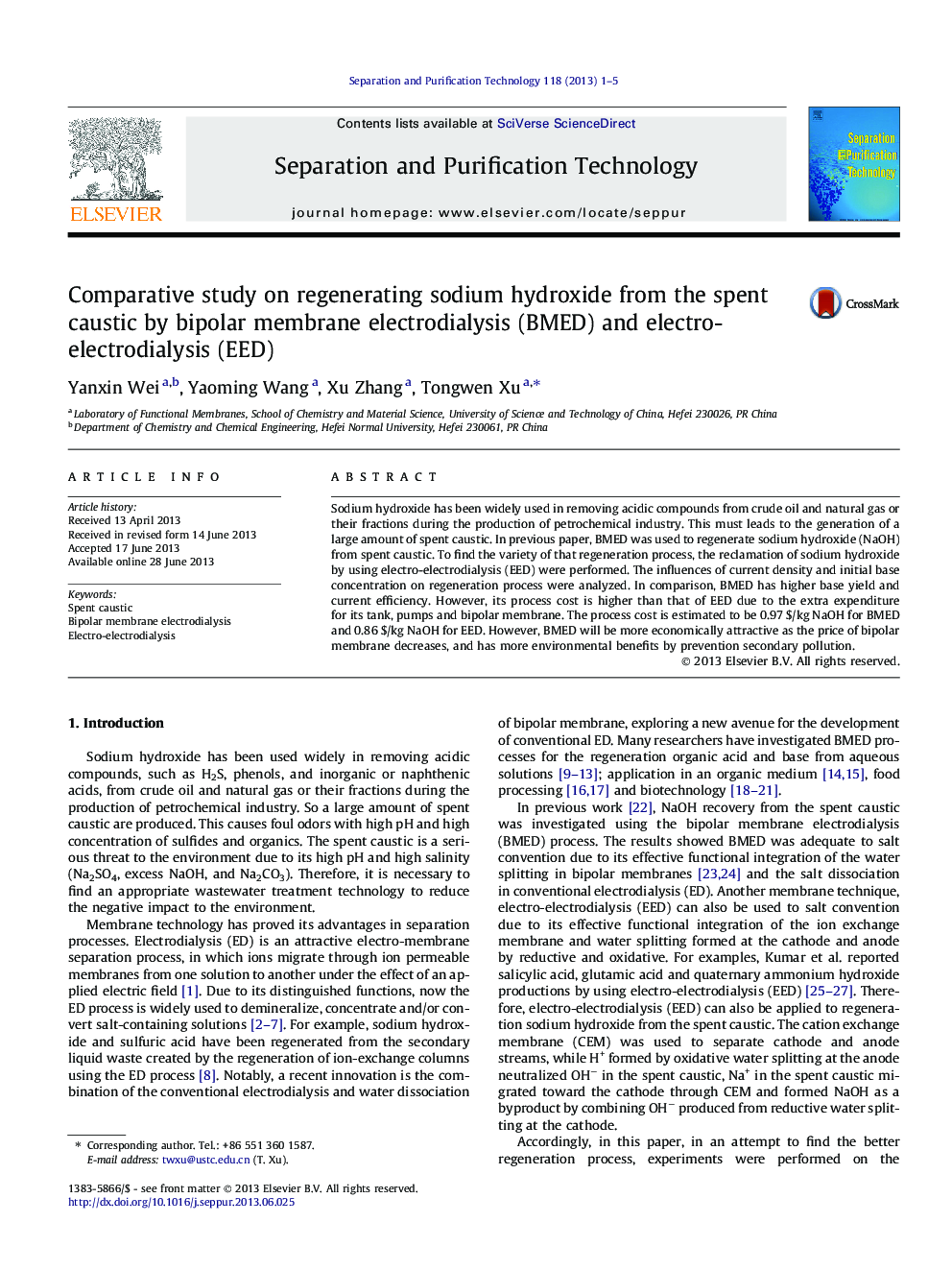| Article ID | Journal | Published Year | Pages | File Type |
|---|---|---|---|---|
| 641473 | Separation and Purification Technology | 2013 | 5 Pages |
•Regenerating NaOH from the spent caustic using two kinds of ED was firstly compared.•The influences of operation parameters on the performance were fully investigated.•The economics were analyzed and commented.
Sodium hydroxide has been widely used in removing acidic compounds from crude oil and natural gas or their fractions during the production of petrochemical industry. This must leads to the generation of a large amount of spent caustic. In previous paper, BMED was used to regenerate sodium hydroxide (NaOH) from spent caustic. To find the variety of that regeneration process, the reclamation of sodium hydroxide by using electro-electrodialysis (EED) were performed. The influences of current density and initial base concentration on regeneration process were analyzed. In comparison, BMED has higher base yield and current efficiency. However, its process cost is higher than that of EED due to the extra expenditure for its tank, pumps and bipolar membrane. The process cost is estimated to be 0.97 $/kg NaOH for BMED and 0.86 $/kg NaOH for EED. However, BMED will be more economically attractive as the price of bipolar membrane decreases, and has more environmental benefits by prevention secondary pollution.
